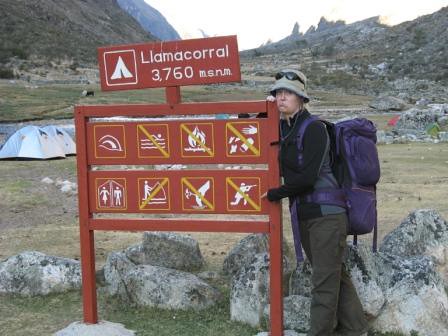The Galapagos islands were discovered (that is by a European) by the bishop of Panama in 1535 (pretty much at the end of the Spanish conquest of the Inca empire). The famous Charles_Darwin visited the islands in 1835. Today, most of the islands area (97%) is uninhabited and is considered a natural reservation. The only way to visit the reservation is with an official guide and a cruise (because only 4 islands are inhabited and have transportation between them) and even then the walking paths on the islands are well defined. Those rules prevent any uncontrolled intervention with the animal and plant life on the islands. Never the less, the island´s seclusion and differences in habitat conditions and the fact that all the animals linger close to the trails and don´t run (or fly) when a tourist approaches make it easy to understand how Darwin devised his theory about natural selection and adaptation.
In this entry I´ll try to describe (and mostly show) the different animals and plants that evolved (if you believe that theory) on the different islands because of their different conditions.
Giant Turtles
The famous giant land turtles evolved on all of the islands (it is believed that they evolved from marine turtles). Because different islands have different areas but mostly different heights above sea level they get different amount of water and vegetation. Thus, each island has its own endemic turtle that developed the characteristics required to survive on that island. Some species of turtles are already extinct and they differ in size and shape of their shells. The turtles live up to 150-200 years. One turtle at the Charles Darwin station (on Isla Santa Cruz) is the last of his species (known as lonesome George)
 giant turtle at the Charles Darwin station, Isla Santa Cruz
giant turtle at the Charles Darwin station, Isla Santa Cruz
 Now it´s obvious where Morla came from
Now it´s obvious where Morla came from
Sea Lions
Obviously, sea lions are not endemic to the Galapagos but they´re ubiquitous and very funny. By the way, they don´t really cry but get rid of the salt in their bodies through glands next to their eyes.
 Sea lion on Isla Española
Sea lion on Isla Española
 Sea lion cub on Isla Floreana
Sea lion cub on Isla Floreana
The following photo is of a newly born cub, its mother and the placenta. The guide told us that this is probably a first birth for that mother because she didn´t move away from the placenta that draws predators (e.g. Eagles) that can kill the baby.

Newly born sea lion
 Sea lion playing with marine Iguana
Sea lion playing with marine Iguana
Plant life on Isla Santa Cruz
Santa Cruz has high planes that get a lot of humidity and thus it has unique endemic plants. One of those plants is called Escalasia Pedumculanta and it exist only in those planes on that island. The Escalasia lives in symbiosis with the moss that collects humidity for the tree.

The Escalasia on Isla Santa Cruz

Another plant ... just beautiful
Land Iguanas
The land Iguanas are also endemic and differ from island to island. The iguanas on Isla Santa Fe eat only the cactus that grow on the island. The cactus is very tall and the iguanas can´t climb and have to wait for pieces to fall. That is why it is the only type that is territorial and can get along without food or water for months (even up to a year).

Land iguana in the Charles Darwin center

Land iguana on Isla Santa Fe

The cactus on Isla Santa Fe
Marine Iguanas
Those iguanas can swim between the islands, dive up to 15m and drink sea water. They get rid of the salt through glands in their head and sneeze it out. The iguanas shed their skin and the Mocking birds eat it along with parasites in the iguana´s skin.

Marine iguana, Isla Española

Mocking bird on the iguanas

Swimming marine iguana
Albatrosses
These giant birds (wing span of about 240 cm) live around 60 years and are monogamous. In order to identify their partner they perform an elaborate dance that takes about 30 minutes. It´s difficult for them to take off so they jump from cliffs. The guide said that they control their brain´s hemispheres separately and can fly while one side is sleeping and switch.

Albatross on Isla Española

Another albatross

Albatross chick

Albatross parents and chick
Flamingos on Isla Floreana
They are pink because they eat Shrimps that they find in the salty muddy bottom of the lagoon in the island. The chicks have to reach the wet season when they´re ready to learn how to get the shrimps. It is only then that the lagoon´s salty water is covered with a layer of sweet water and the mothers lift some mud and the Shrimps get confused in the sweet water so the chicks can catch them.

Pink Flamingo, Isla Floreana
Frigates
They are known for their red sacks on the neck that the males blow in the mating season. They get food by fishing without touching the water or by stealing from other birds. If they get in the water while fishing they drown. That´s why they keep the hatchling in the nest for an entire year.

Male Frigate, Isla Seymour

Frigate Chick, Isla Seymour

Frigate flying
Boobies
The funniest birds are the Blue Footed Boobies. Beside their name they also make weired movements and whistle funnily. We also saw the masked boobies. They hunt fish in groups and dive into the water like arrows.

Blue footed booby

Blue footed booby and chick

Blue footed booby courting

Boobies hunting

Masked Booby
Other beautiful animals we encountered

Pelican landing

Crab

Eagle and chick

Group Photo
 Good thing I have action filled dreams at least!
Good thing I have action filled dreams at least!

















































